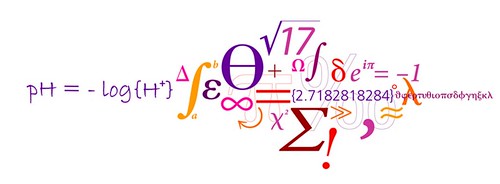2009 is the 100th anniversary of the notion of pH, proposed by the Danish chemist S.P.L. Sørensen.
Shortly after having been appointed head of the Chemical Department at the Carlsberg Laboratory in 1901, Sørensen started an extensive research programme on amino acids and proteins. One of his projects was the kinetics of enzyme dissociation; among other things, he found out that the degree of dissociation is dependent not only on temperature but also on hydrogen ion activity.
Summing up his enzyme investigations in 1909, Sørensen proposed the first logarithmic scale for hydrogen ion activity (pH) which is still in use: 0 is very acidic, 14 is very basic, and 7 is neutral (distilled water). The letter ‘H’ obviously stands for ‘Hydrogen’, but historians are still discussing what Sørensen meant by the letter ‘p’. Does it stand for ‘power’, ‘potential’, ‘Potenz’, etc., or is it just a arbitrary chosen letter?
Whatever, it was probably less arbitrary than this logo created by the Department of Chemistry, Technical University of Denmark.
Sørensen also developed a practical colourimetric method for determining pH. Using buffer systems covering the whole pH scale, he was able to produce reference solutions of known pH, and by applying a series of organic substances that shift colour depending on acidity, the pH of an unknown solution could be determined. Generations of students have used colour indicators for acid-base titration in school and in their university courses. Indicators on paper strips for rapid pH measurement are ubiquitous.
Today, pH is determined by a probe (a thin-walled glass bulb), which produces a small voltage that can be measured electronically. The first commercially successful electronic pH meter based on potentiometric principles was constructed in 1934 by the American chemist Arnold Beckman, who later founded Beckman Instruments (now Beckman Coulter). A few years later the Copenhagen company Radiometer put an electronic pH meter on the market.
(adopted from Medical Museion’s latest exhibition, ‘Primary Substances’)
(image from the Department of Chemistry, Technical University of Denmark)
